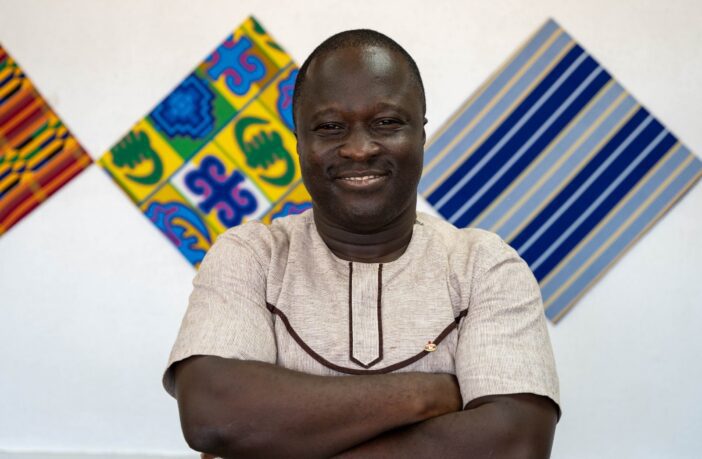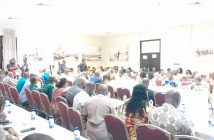“If our language, our programmes, our creations are not strongly present in the new media, the young generation of our country will be economically and culturally marginalised.”
——– Jacques Chirac
Introduction
Communication is undoubtedly central to the development of every society. This shows that communication and development are inseparable. As a result, there is no progress without communication. It is noteworthy to convey development messages, using appropriate communication channels and techniques (Coldevin, 1987), in not only helping to improve the living condition of the people, especially the marginalised group, but also in increasing their participation in the development process (Omeonu et al, 2020).
New media tools are vigorously being leveraged to promote relevant developments in society. The importance to the communities and the nation as a whole can be experienced through the mode of delivery, nature, and the impact on the general public. The surge in the usage of new media tools does not take out old forms of traditional media but enhances and improves upon that to make communication for development better in every way.
There are many of these tools that can be considered to play major roles in communication for development.
A mix of new & refined traditional media tools
Social media (cell/mobile phone):
For those who practise development, social media and development is now entering a new and exciting phase. As Internet connectivity becomes more widespread, and cell phone use becomes more widespread, millions of new potential content creators gain access to social media each year. More social media content for growth can and should be created by development goals themselves. The benefits of this shift to local media creation are obvious. The cell phone, as social media tool, enhances the ability of the poor to voice their concerns and priorities, as well as communicate their vision and purpose. Self-advocacy is a form of empowerment not always offered by traditional development projects.
Mobile phones are used to redefine local markets, public health and education, as well as alert communities to disasters. Many conspicuous projects have been in Rwanda, Sri Lanka, Nigeria, Myanmar, Pakistan, Kenya, China and Bangladesh. Example: “Rwanda: TRACnet Mobile Health Information System. The TRACnet system, developed by the Voxiva company, is a Web application accessible by both computers and mobile phones. The system allows clinics to send HIV/AIDS patient information from a mobile phone with short messaging service and send SMS to a central database using a standard Motorola phone with a downloadable app.
Using TRACnet, medical staff can track and trace HIV-positive patients in remote and isolated areas without electricity and poor infrastructure. Clinics can also receive lab test results and medication reminder alerts on their mobile phones. They can also submit health alerts and antiviral inventory, as well as download treatment guidelines and training materials. The system is designed to enhance the accountability of healthcare workers through an electronic record created each time they enter the system. TRACnet also facilitates better communication from clinic to clinic as well as individual clinics at the Ministry of Health in Kigali.
As social media penetrates more into developing markets, more voices will be able to be heard globally. This change, in itself, is good and should also be accepted and used by development practitioners in our efforts to empower and connect with the community.
Despite some challenges, social media is being used by those in developing countries to serve many purposes including:
- Political coordination:
For example, in places like Cambodia, where traditional media sources are largely controlled by the government, the opposition party was able achieve large gains in legislative seats and nearly take the presidency due largely to savvy use of social media.
- Historical & culture preservation: Traditionally the job of ethnographers, local populations in developing countries have begun telling their own stories and describing their own history and culture through social media.
- Accountability: As the poor begin to speak out through social media, they can use that voice to speak out against the abuses they experience. Especially in isolated communities facing the extractive industries, locals are in the best place to see and disseminate important information to the general population. Rural people’s use of mobile phones to record and send important environmental information has been achieved through the Green Lines project in Nigeria for example.
Community radio:
Community radio, as a tool of mass communication, helps educate, empower and equip citizens with adequate knowledge of events that unfold at particular periods. Community radio, as a mass communication medium, helps establish interaction between people, communities and the entire nation in championing development. Mass communication media, especially radio, has become crucial in the delivery of development programmes in communities. Thus, for any development activity to be accomplished, community radio – as a tool – is indispensable.
Many government efforts at reaching the various rural communities with decentralisation benefits have proved futile due to poor coverage and information dissemination. The achievement of development policies, programmes and projects is largely determined by the ability to marshal the masses for such programmes, policies or projects (Nwabueze, 2007); hence the need for mass communication medium of radio for campaigns on on development. The usage of community radio for effective campaigns across the world cannot be overemphasised.
Community radio provide methods of reaching isolated and marginalised communities with development initiatives. Across the globe, projects to be carried out in India, Afghanistan, the Balkans and South Africa are thoroughly discussed for the benefit of natives. For example: “In 2003, the Internews Network – an American NGO [non-governmental organization] – designed a million-dollar project to build a network of 32 independent radio stations throughout Afghanistan. The project also aimed to train journalists at the stations and build a set of programmes based on Kabul to help with development and reconciliation around the country. Internews worked with local partners at each of the 32 stations, drawing on the local community’s expertise on regional issues. For the first time in Afghanistan’s history, the project brought media production to the local level outside of major cities. It has given voice to the rural people of Afghanistan in a country suffering from severe electricity shortages and illiteracy. Studies, at the time, noted that radio was the most likely means of reaching Afghan women.
References
Gustafsson. J, (2013). Community Radio: Bringing Unity to the Slums During Election Times. African Communcation Research, 6(2), 163-187.
Jallov, B. (2012). Empowerment Radio: A voice building a community. Empowerhouse, 8.
Sarr. A, (2014). Community Radio Tolls to Promote Peace, Culture, Democracy and Development in Africa. AMARC Afrique.
Tabing. L, (2002). How to do Community Radio: A Primer for Community Radio Operators.
New Delhi: United Nations Educational, Scientific and Cultural Organisation UNESCO. Wabwire. J, (2013). The role of community radio in development of the rural poor. New Media and Mass Communication, 10, 2224-3267.
About the Writer
Ebenezer ASUMANG is a Development Communication professional with a penchant for researching, practising and writing on multi-sectoral issues related to development communication globally.
You can reach him on info@ebenezerasumang.com





